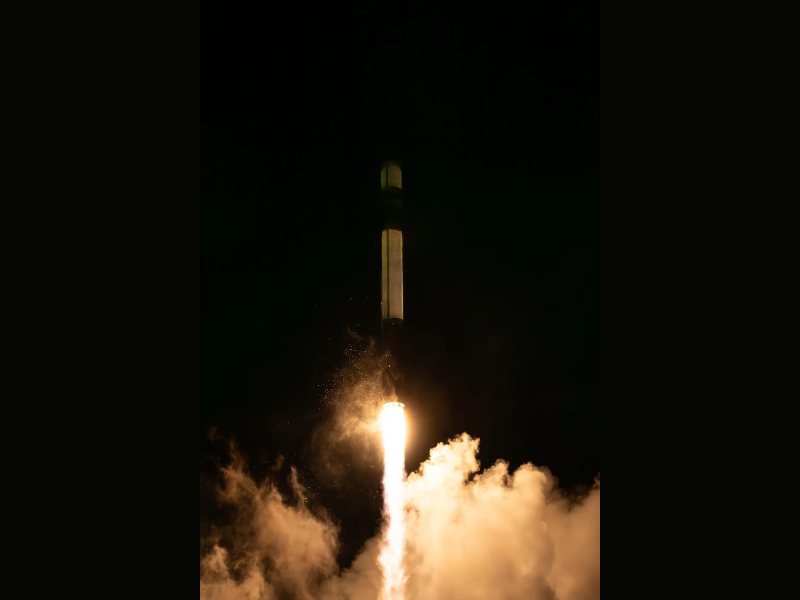The first of a pair of small climate satellite (s) designed to study heat emissions at Earth’s poles for NASA is in orbit after lifting off atop Rocket Lab’s Electron rocket from the company’s Launch Complex 1 in Māhia, New Zealand at 7:41 p.m. NZST (3:41 a.m. EDT) on Saturday.
The agency’s PREFIRE (Polar Radiant Energy in the Far-InfraRed Experiment) mission consists of two shoebox-size cube satellites, or CubeSats, that will measure the amount of heat Earth radiates into space from two of the coldest, most remote regions on the planet. Data from the PREFIRE mission will help researchers better predict how Earth’s ice, seas, and weather will change in a warming world.

Image taken from NASA website
“NASA’s innovative PREFIRE mission will fill a gap in our understanding of the Earth system – providing our scientists a detailed picture of how Earth’s polar regions influence how much energy our planet absorbs and releases,” said Karen St. Germain, Director of NASA’s Earth Science Division in Washington. “This will improve prediction of sea ice loss, ice sheet melt, and sea level rise, creating a better understanding of how our planet’s system will change in the coming years — crucial information to farmers tracking changes in weather and water, fishing fleets working in changing seas, and coastal communities building resilience.”
Ground controllers successfully established communications with the CubeSat (small climate satellite ) at 8:48 EDT. The second PREFIRE CubeSat will set off on its own Electron rocket from Launch Complex 1 in the coming days. Following a 30-day checkout period during which engineers and scientists will make sure both CubeSats are working normally, the mission is expected to operate for 10 months.
At the heart of the PREFIRE mission is Earth’s energy budget – the balance between incoming heat energy from the Sun and the outgoing heat given off by the planet. The difference between the two is what determines the planet’s temperature and climate. A lot of the heat radiated from the Arctic and Antarctica is emitted as far-infrared radiation, but there is currently no detailed measurement of this type of energy.
The water vapor content of the atmosphere, along with the presence, structure, and composition of clouds, influences the amount of far-infrared radiation that escapes into space from Earth’s poles. Data collected from PREFIRE will give researchers information on where and when far-infrared energy radiates from the Arctic and Antarctic environments into space.

“The PREFIRE CubeSats may be small, but they’re going to close a big gap in our knowledge about Earth’s energy budget,” said Laurie Leshin, Director, NASA’s Jet Propulsion Laboratory in Southern California. “Their observations will help us understand the fundamentals of Earth’s heat balance, allowing us to better predict how our ice, seas, and weather will change in the face of global warming.”
The mission’s CubeSats each carry an instrument called a thermal infrared spectrometer, which use specially shaped mirrors and sensors to measure infrared wavelengths. Miniaturizing the instruments to fit on CubeSats necessitated downsizing some parts while scaling up other components.
“Our planet is changing quickly, and in places like the Arctic, in ways that people have never experienced before,” said Tristan L’Ecuyer, PREFIRE’s principal investigator, University of Wisconsin, Madison. “NASA’s PREFIRE will give us new measurements of the far-infrared wavelengths being emitted from Earth’s poles, which we can use to improve climate and weather models and help people around the world deal with the consequences of climate change.”
NASA’s Launch Services Program, based out of the agency’s Kennedy Space Center in Florida, in partnership with NASA’s Earth System Science Pathfinder Program is providing the launch service as part of the agency’s Venture-class Acquisition of Dedicated and Rideshare (VADR) launch services contract.
The PREFIRE mission was jointly developed by NASA and the University of Wisconsin-Madison. NASA JPL manages the mission for the agency’s Science Mission Directorate and provided the spectrometers. Blue Canyon Technologies built the CubeSats and the University of Wisconsin-Madison will process the data the instruments collect. The launch services provider is Rocket Lab USA Inc. of Long Beach, California.
For more news on NASA, please read:
Northrop Grumman’s NG-19 launch completes 10 years of ISS Cargo Resupply Missions





















